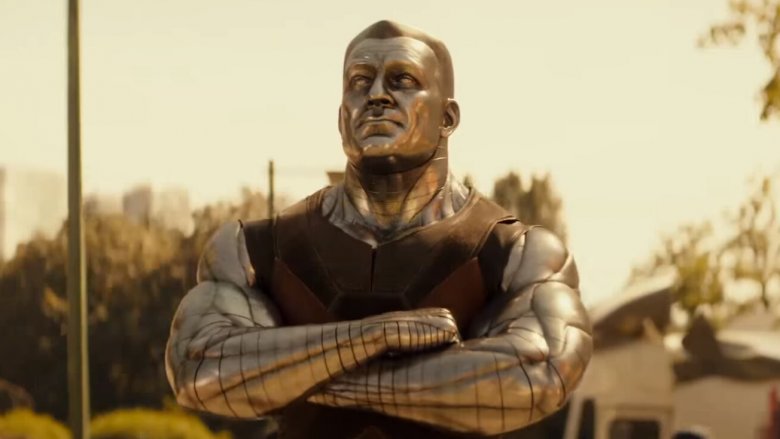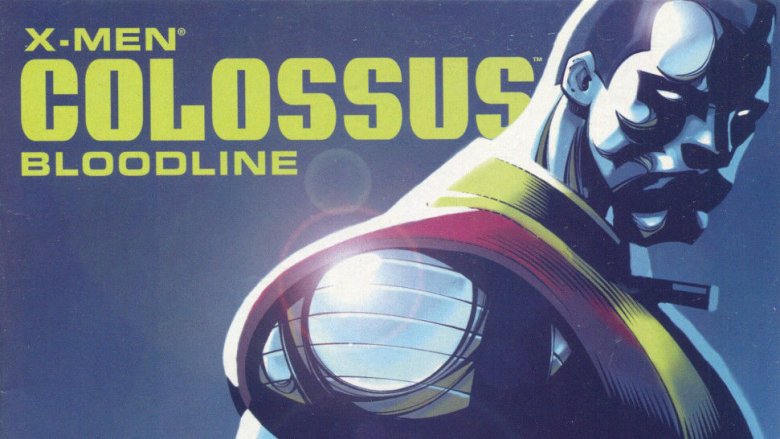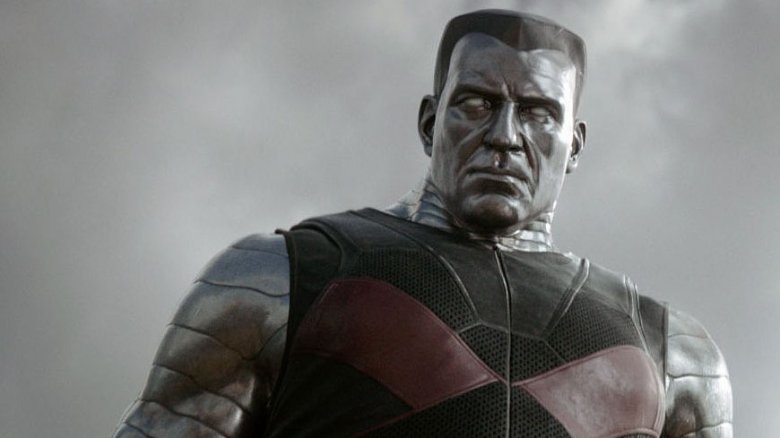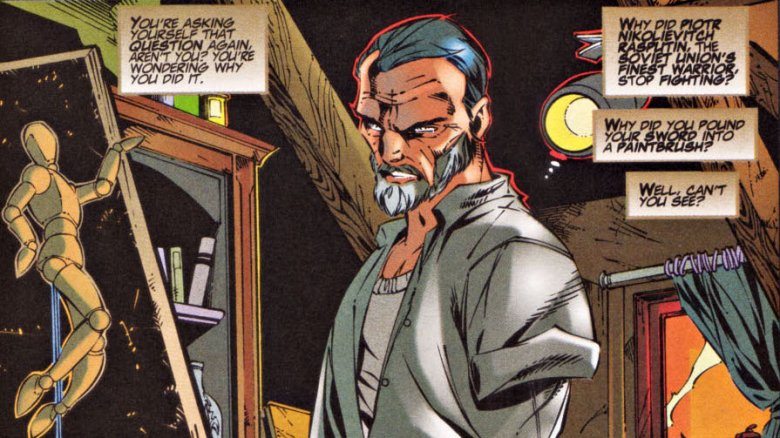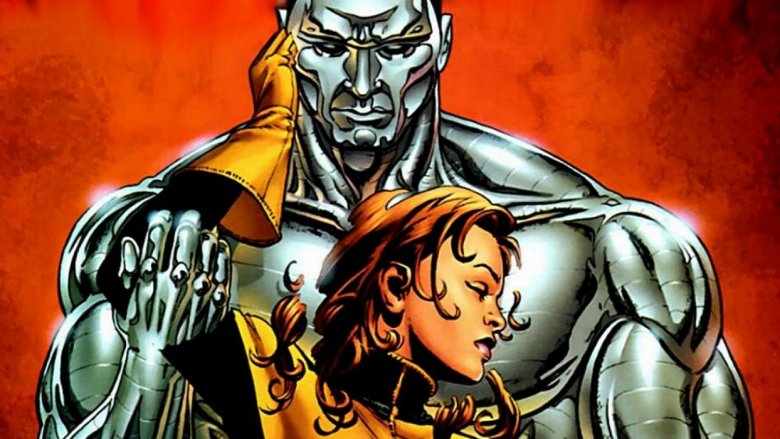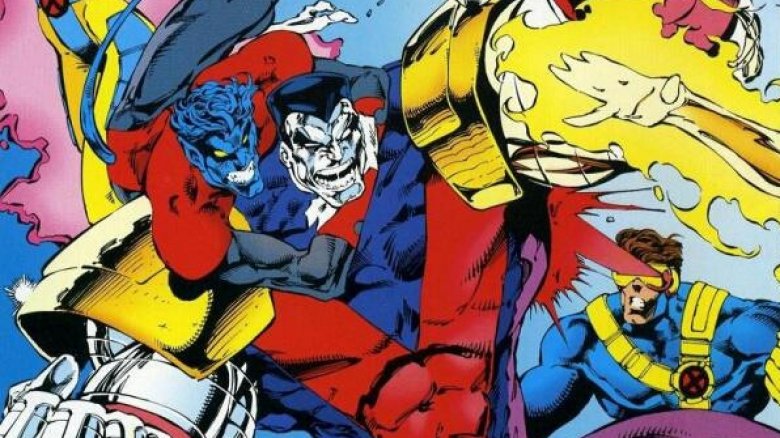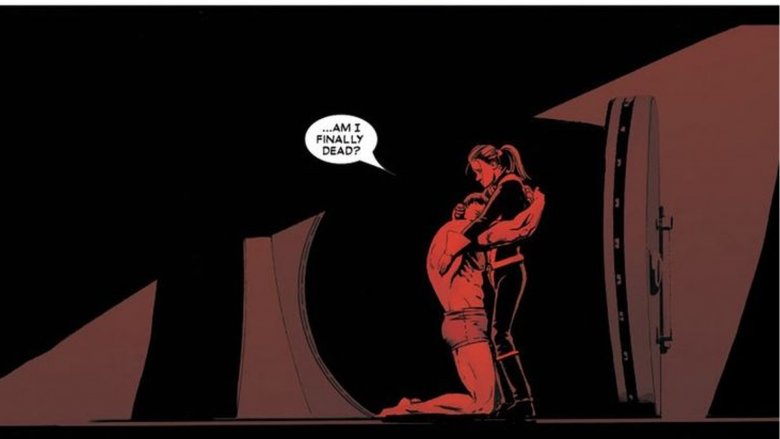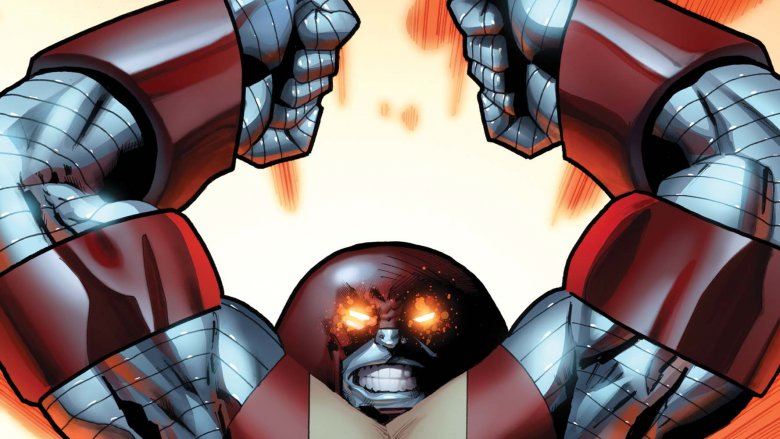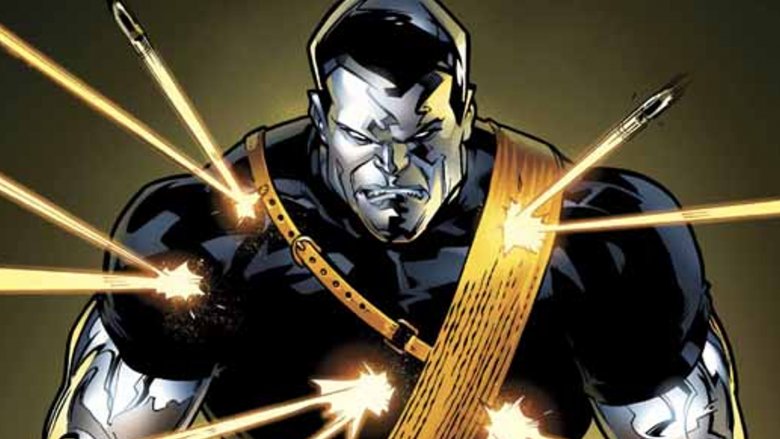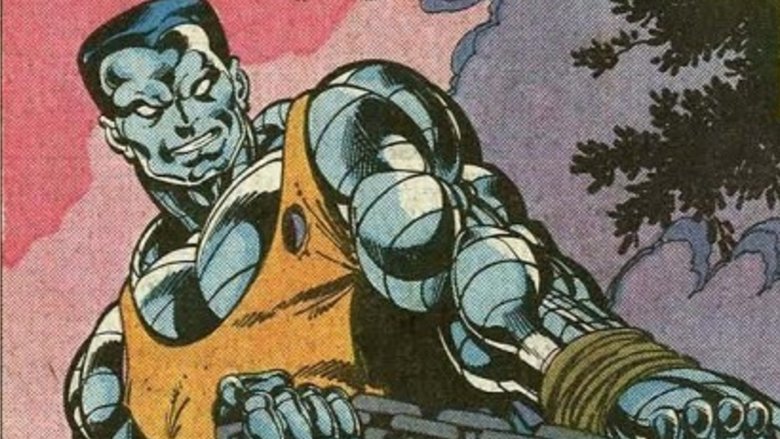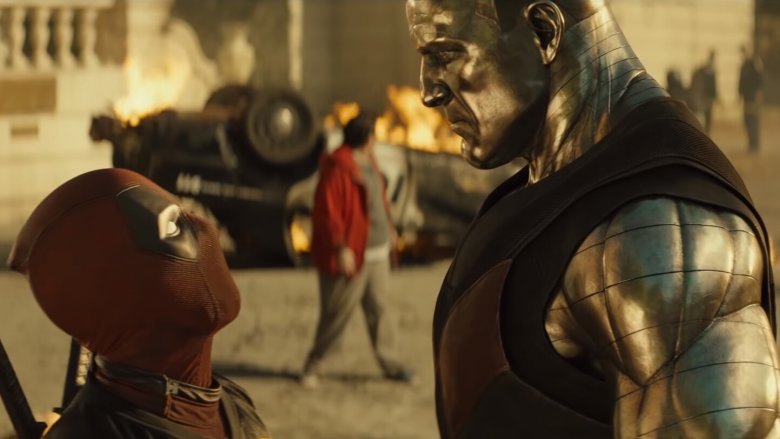The Untold Truth Of Colossus
For all of his R-rated wisecracks and vulgar shenanigans, a big part of Deadpool's appeal has always been his heart. Under all the blood and cussing, the character is driven by doubt, shame, and pain. Both of his solo cinematic outings sought to bring out his conscience, and there was perhaps no better way to do that than pair him off with a character who has often represented the heart and soul of the X-Men: Colossus.
While Colossus instantly became a fan favorite part of both Deadpool movies, the character took a long road to the screen. In a history that stretches nearly 50 years, he's been on countless comic book adventures, had some high-profile romances (some of which were not without controversy), and even died and come back to life. He's had a complex life outside of comics, too, starring in video games, cartoons, and bit parts on the big screen. To show you just how he ended up playing Jiminy Cricket to Wade Wilson's Pinocchio, we've got some facts you might not know. This is the untold truth of Colossus.
He's related to Rasputin
Piotr "Peter" Nikolaievitch Rasputin (or Colossus, as Professor Xavier dubbed him upon his recruitment to the X-Men) has always had a strong connection with his family. Growing up on a collective farm in the Soviet Union, his mutant strength showed itself early. He was pleased to help those around him, doing chores and making their lives easier with his superhuman might in any way he could. One day, he saved his beloved sister, Illyana, from a runaway tractor by bearing the brunt of the renegade machine.
The tractor incident put him on the radar of Professor X, and the rest was history. Piotr remained devoted to Illyana even as he began to focus less on the farm and more on the global (sometimes even cosmic) greater good. But it wasn't until the 2006 comic miniseries Colossus: Bloodline that Marvel revealed a shocking truth about Piotr's family: they were descended from Grigori Rasputin. Yes, that Rasputin, the scourge of the Romanov dynasty. A plot by the undead spirit of the Mad Monk to return via his descendants was thwarted by Colossus and his astronaut brother, Mikhail.
He's heavy metal
Every X-Men fan knows Colossus can turn his skin into a metallic armor, but what you might not realize is just how deep the transformation runs. When his mutation is activated, his entire body becomes a steel-like substance. He can make this change at will and maintain it for several days, though he will revert to human form if rendered unconscious.
Not only does a body of 100 percent organic metal naturally grant Colossus incredible strength and durability, it also makes him extremely resistant to the needs and fatigues of human tissues. As long as he's in his superpowered state, Colossus has no need to sleep, eat, drink, or even breathe. This, of course, comes in handy on the X-Men's more daring missions into deadly territory.
It's unclear if the big-screen version of Colossus shares this immunity to hunger — don't forget that we see him emptying the contents of his stomach at the end of Deadpool.
He's a talented artist
One of the main reasons for the X-Men's ongoing popularity through the decades is the bountiful personalities of the cast. Far more than a mere band of super weirdos acting as blunt instruments, the comics have always been all about humanizing their diverse menagerie of characters by showing their rich inner lives, their passions, and even their hobbies. Just as Beast has his penchant for poetry and prose, Jubilee has her mall babe lifestyle, and Gambit has his raging Cajun libido, Colossus has his painting.
Piotr has always taken delight in filling his downtime with artistic pursuits, drawing and painting beautiful portraits of this teammates and friends. An issue of Marvel's What If? series imagined a universe in which Colossus left the ranks of the X-Men to devote his life full-time to art. This facet of his personality was even referenced in the first X-Men movie, in which Colossus is little more than an Easter egg but can be spotted sketching the courtyard of Xavier's School for Gifted Youngsters.
He has one true love
He smashed the box office in Deadpool 2 in May of 2018, but that pales in significance compared to another event on Colossus' calendar later in the year: his wedding! In Marvel's X-Men Gold series, Piotr proposed at last to another fan favorite character, Kitty Pryde. It's the next step in an epic love story that's gone on for decades, full of twists, turns, and no small amount of controversy.
In honor of their nuptials, CBR compiled a thorough rundown of this sometimes sordid affair. Kitty and Piotr first met when she debuted in a 1980 issue of X-Men, and they immediately hit it off. She was introduced as a 13-year-old, and while his age was not firmly established, he was clearly a little bit older. Their casual flirtation got serious when the Days of Future Past arc revealed an older Kitty and Piotr who were married.
When she turned 14, it was made clear that he was 19, and that's when things, understandably, got weird. Piotr became conflicted about their age difference and cooled their romance, though they both continued to run hot and cold for each other. Finally, they were allowed to age up into full-fledged adulthood, where the five-year gap is significantly less creepy, and now seem destined to live happily ever after.
He once joined Magneto
While many superheroes' nemeses represent the polar opposite of their morals or worldview, the X-Men's most iconic antagonist has always been a little more complex. Magneto and Professor X are two men cut from the same cloth who both want what's best for mutants...they just strongly disagree about how to achieve this dream. While Magneto's extremist agenda usually runs counter to Xavier's pacifist position, it's long been impossible for many X-Men characters (and fans, for that matter) to ignore that Magneto Was Right...or, at the very least, Made Some Valid Points.
That's why Colossus' ever-present love for his family once drove him to switch sides. When a plague known as the Legacy Virus devastated the mutant population, Piotr's sister Illyana fell ill and died. Reevaluating his priorities, he started to believe that maybe Xavier wasn't doing everything he could to defend the lives of those who needed the X-Men's protection. He briefly allied himself with Magneto's more militant organization, the Acolytes, though he quickly realized that didn't suit him either, and rejoined his former team.
He was resurrected by Joss Whedon
His grief for Illyana eventually drove Colossus to bring an end to the Legacy Virus once and for all. Tragically, it also required him to sacrifice his life. A cure was at last discovered by Beast, but its dissemination required a mutant to take a fatal dose. Piotr, desperate to ensure that what happened to his sister happen to no one else, took the vaccine in secret, preventing his distraught teammates from stopping him. Kitty flew to his homeland to spread his ashes to the Russian winds, making peace with a death that seemed considerably more permanent than most comic casualties.
However, the death of Colossus would last only a few years before the Astonishing X-Men series reversed it. It turned out that his body was switched at the time of his apparent demise by the alien being known as Ord, who imprisoned him and used him for a litany of genetic experiments. Kitty eventually found and rescued Piotr, returning him to the team. Ironically, this story was scripted by none other than Joss Whedon, a creator known far more for killing beloved characters than bringing them back.
He's been the Juggernaut
The massive Marvel crossover event Fear Itself found the entire population of the company's comic book universe confronting their greatest nightmares. An Asgardian entity known as the Serpent called to Earth a collection of hammers that would bestow their bearers with tremendous power. The Juggernaut happened to end up with one, transforming him into Kuurth, Breaker of Stone. This horrific goliath stampeded through downtown San Francisco, easily trouncing the band of X-Men attempting to thwart him.
However, the Juggernaut's willing acceptance of the power of Kuurth offended Cyttorak, the spirit that had long been the source of his strength. Cyttorak abandoned his host, and Colossus offered himself up as a new vessel. Emerging as "the Unstoppable Colossus," a transformed Piotr charged forth with what had been the power of the Juggernaut, successfully standing up to the stonebreaker. Though he feared the lust for destruction imbued in him by Cyttorak's presence, Colossus was triumphant, and Kuurth fled.
Ultimate Colossus
Marvel's Ultimate Universe, introduced in 2001, presented a new continuity in which the decades of increasingly complex comics history no longer needed to matter. Tightening up relationships, streamlining backstories, and trying concepts that weren't possible in the main line, the Ultimate comics presented variations on Marvel's iconic stable of characters that were recognizable, but remixed. For the most part, each hero was the same at their core, but found themselves shaped by different circumstances.
One significant difference in the pages of Ultimate X-Men was Colossus' love life. After some flirtations and innuendo that were clumsy to say the least (not only on the part of Piotr but the writers as well), Ultimate Colossus was canonically confirmed as gay when he started a relationship with Northstar (who was already known to be out in both the Prime and Ultimate universes). Colossus' sexuality caused conflict with Nightcrawler, who was forced to reconcile their friendship with his own religious beliefs.
He broke up an iconic team
Days of Future Past. The Dark Phoenix Saga. Proteus. So many of the most cherished stories in X-Men history were products of one creative partnership: writer Chris Claremont and artist John Byrne. In the history of comic books, few teams can match their influence. What makes their output even more incredible is the fact that they spent a mere four years working together on X-Men. What ended their titanic run? Well, it falls on the broad, metallic shoulders of Colossus.
Byrne has described himself and Claremont as having "a kind of Gilbert and Sullivan relationship, almost constantly at war over who the characters were." The pair worked in what's known as "the Marvel Method," a process solidified in the days of Jack Kirby and Stan Lee, in which a comic's credited writer and artist share more duties than their titles might imply. After collaborating on a plot, the artist draws the pages before the writer finishes it all up with dialogue.
The nebulous nature of this style can sometimes lead to tension if the final script doesn't match the artist's intent. Such was the case with a scene in which Colossus endeavors to remove a stump from the X-Mansion lawn. After Byrne illustrated Piotr executing the chore with ease, Claremont plugged in a monologue about the great struggle required. This was just the latest instance of this particular frustration for Byrne, who resigned from the book the same day he saw the finished pages.
It took five performers to bring him to life
Colossus' big heart, elemental power, and striking design have long made him a fan favorite. As the X-Men franchise began to conquer other media outside of comic books, Piotr Rasputin maintained a key role in most versions of the mutant team. Video games and animated TV series captured his essence to audience delight, but when it came time to crash the big screen, the road was a little rougher.
The first X-Men movie, released in 2000, relegated Colossus to the aforementioned cameo. Its sequel, X2: X-Men United, gave the metal mutant (played, sans Russian accent, by actor Daniel Cudmore) a brief action scene before he disappeared once again from the story. Cudmore returned for slightly expanded parts in X-Men: The Last Stand and Days of Future Past, but the character remained sadly sidelined.
It wasn't until Deadpool that Colossus would make it to the screen in a recognizable shape...and sound. "As a fan, it bothered me when he didn't speak with a Russian accent," director Tim Miller confessed. Not only did Deadpool's broader tone free the filmmakers to be more faithful to the comics, but Piotr's sweet nature made him a perfect foil for the antisocial Wade Wilson.
But it was no simple task — it took five performers to bring Colossus to life. While Serbian actor Stefan Kapičić provided the voice, towering stunt performers Andre Tricoteux and T. J. Storm shared motion capture duties, and facial shapes were carried out by stuntman Glen Ennis and motion capture supervisor Greg LaSalle. For Deadpool 2, the process was streamlined, with Kapicic performing Colossus' face while Tricoteux returned as the on-set stand-in.
